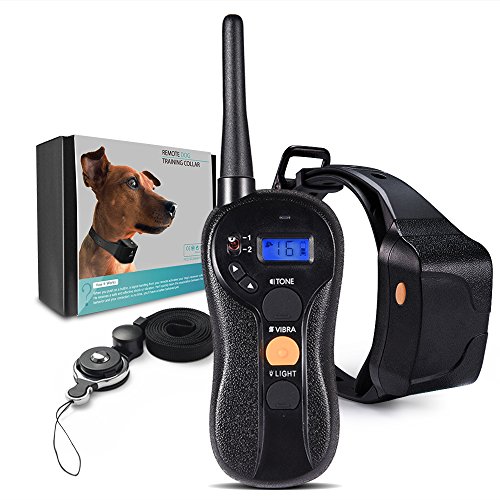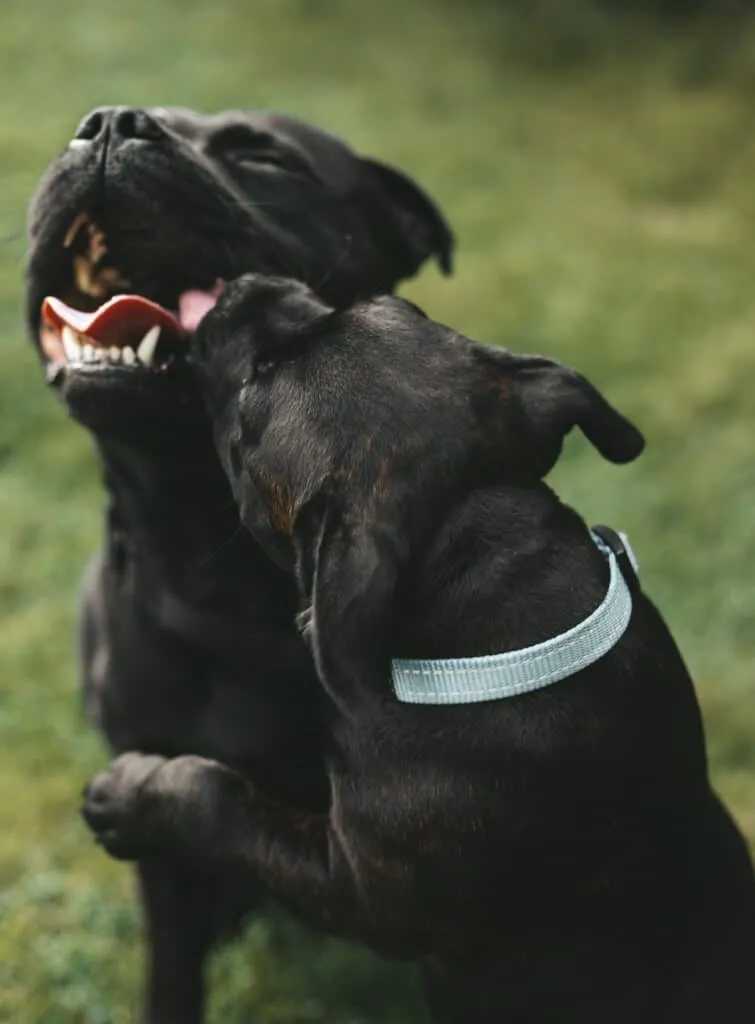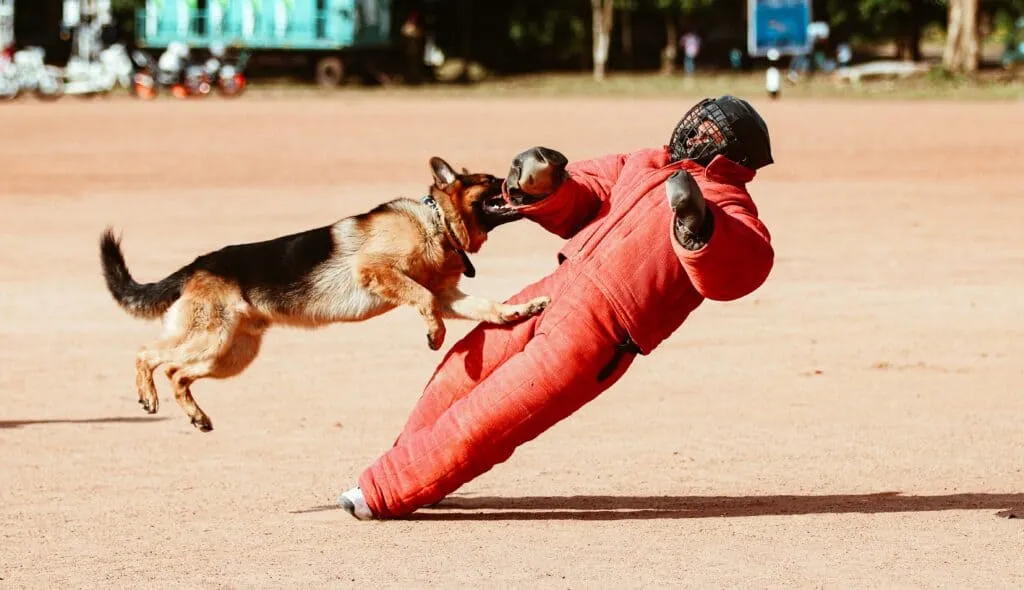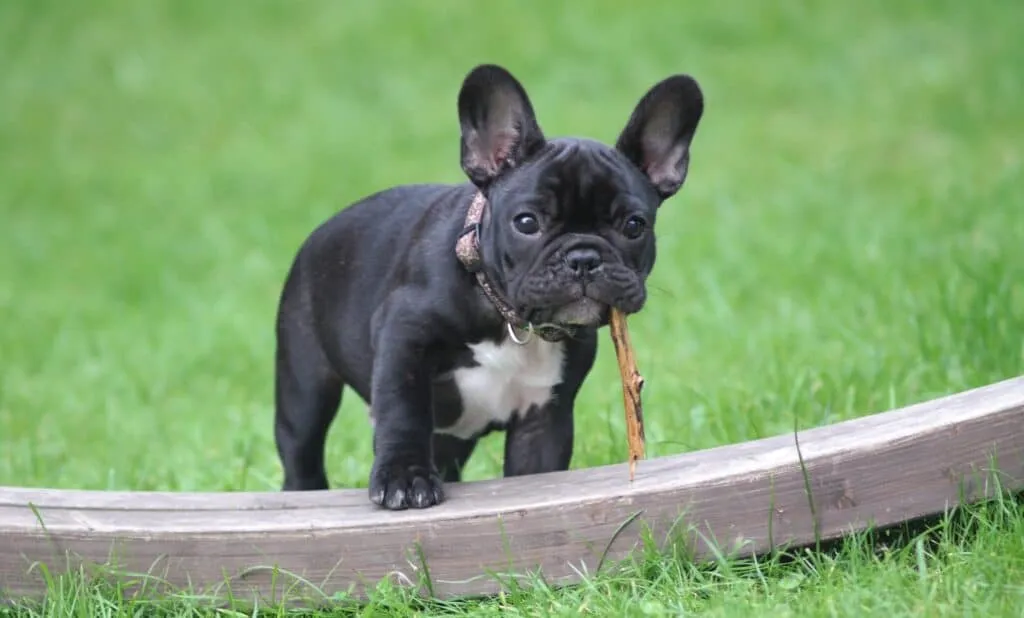Are you struggling in training your furry companion dog obedience? If you do, using dog training collars can be a game-changing tool that can transform your dog’s training experience.
As pet parents, we want our dogs to be fully trained to avoid behavioral problems and grow them into happy and healthy dogs. However, training a dog can be a challenge. You will need to use many strategies and tools to make things work for you and your pup.
Effective dog training is crucial for a harmonious relationship between you and your furry friend. Having a trained pet gives you an assurance that they are always safe, especially in public places.
In this blog post, we’ll explore the world of dog training collars, their benefits, and how to choose and use them responsibly.

Herm Sprenger Ultra-Plus Prong Dog Training Collar, Chrome, 3.25 mm x 20" Neck Size; 22" Chain Length
View on Amazon
PetSafe Gentle Leader No-Pull Head Collar for Dogs, Dog Head Collar - The Ultimate Solution to Pulling, Padded Nose Loop, Quick-Snap Neck Strap, Dog Halter, Large - Black
View on Amazon
DOG CARE 2024 Advanced 4000FT Dog Training Collar with Remote, IP67 Electric Shock Collar for Dogs, 3 Training Modes, Silicone Prongs, Security Keypad, Rechargeable e-Collar for All Breeds & Sizes
View on Amazon
WOLFWILL 100% Waterproof Rechargeable Humane No Shock Remote Dog Training Collar 1980ft Blind Operation with Tone Vibration Light Electric Collar For ALL Size Dogs(22 to 88lbs)
View on AmazonWhat Does a Dog Training Collar Do?
Dog training collars are specially designed collars used as aids in training and controlling a dog’s behavior.
These collars are primarily used to help curb unwanted behavior on the leash, outside, or when approaching the front door of your house. When you select the correct collar for your dog and use it alongside positive reinforcement training, you may see positive results with your pup.
Some people do not think training collars are necessary if you do proper positive reinforcement training. However, your dog may forget what behavior you desire, especially in tempting situations such as a running squirrel. Using the training collar can help remind your pup what you expect.
Most collars used in dog training feature adjustable straps, fasteners, and attachment points for leashes. Some collars incorporate additional components like electronic receivers, contact points, and control devices, depending on the collar type.
It is best to familiarize yourself with the features that your dog’s collar offers to maximize the benefits you can get from using it.

Types of Training Collars for Dogs
Dog training collars come in various types, including pinch collars, anti-bark collars, invisible fence collars, remote-controlled collars, gentle leader collars, and electronic dog collars. Each collar serves a specific purpose, and understanding their differences is essential to make an informed decision.
Pinch collars or prong collars
Pinch collars or prong collars may be a good start if your pets are pulling while walking on the leash. These collars may also help train your dog how to heel while on a walk. It is recommended you only use this type of collar to train larger breeds and if your pet walks next to you, not in front of you.
These metal collars are made of metal prongs that interlock with one another. When you place a pinch collar on your dog, the metal rests against the skin of its neck. When the dog is walking next to you, it feels like a normal collar for them. However, once your dog pulls on the leash, the collar will pinch its skin, causing an uncomfortable feeling and resulting in your dog stopping.
Anti-bark collar
An anti-bark collar comes in three different varieties: static shock, citronella, and ultrasonic. These collars usually have nylon fabric, with a small device attached that senses your pup’s vocal chord vibrations.
Once your dog barks, it will release the stimulus to signal your dog to stop.
Dog shock collars will release a shock to the degree you choose. A citronella dog collar releases a spray of citronella liquid that will likely smell unpleasant to your pup, causing them to stop the unwanted behavior. And an ultrasonic bark collar will release high-pitched sounds that will deter your dog from continuing the bark.
Invisible Fence Collar
An invisible fence collar may be an excellent choice if you have a large, unfenced yard. This collar operates in connection with a system that is installed underground around the border of your yard.
When your pup approaches the set border, it will hear a sound much like the ultrasonic collar. If your dog crosses the boundary with the collar, it will feel a shock, much like other shock collars. The shock stops your dog and keeps your pet within the designated boundary.
Remote-controlled Training Collars
Remote-controlled collars may be very useful if you want to take your dog off-leash to explore or hike. You want your dog to be free to discover his surroundings within a long range. These collars are worn around your pup’s neck snuggly and have a mechanism much like the bark collar or invisible fence collar.
As the owner, you hold a remote control that can signal with a sound, vibration, or shock to signal to your pup even when they are too far away. These collars have a long range, allowing your dog to explore but still stay within your sight.
Gentle Leader
The gentle leader can be used to discourage your dog from pulling or lunging while on walks. The nylon design wraps around your dog’s neck as well as its nose. This gentle pressure helps keep your dog close to you when walking.

Benefits of Dog Training Collars
Using a dog training collar has its advantages. Here are the common benefits pet owners can gain from its use.
Timely Communication
Training collars facilitate clear and timely communication between a dog and its owner. These collars enable you to convey commands in a timely manner, even when your dog is far from you.
You will be able to let your dog know what you want to convey more effectively. These collars enhance your ability to guide your furry companion during training sessions.
Behavioral Correction
Training collars can be instrumental in correcting negative dog behaviors, such as excessive barking, digging, or jumping on guests.
As the communication between you and your dog is enhanced with a training collar, your dog will immediately understand what you want to convey. Feedback is immediately provided, redirecting your dog’s behavior positively.
Aid in Off-leash Training
A dog training collar is especially advantageous in off-leash training. As your dog is outside of your reach and arm’s length control, a training collar would be effective in keeping some sort of communication with your dog.
These collars keep your dog’s attention during the training session and help reinforce your dog’s response to commands. With these collars, your dogs get to enjoy their freedom without a leash but still stay safe under your control.

Are Dog Training Collars Safe?
There is some controversy about pinch collars and shock collars. Many dog owners are afraid the pinch or shock will harm their dogs. However, these collars can be a safe tool if used properly for your dog.
Not all collars are appropriate for all dogs. The pinch collar can be dangerous if you have small dogs or a dog with a small neck. If you find that your dog is still consistently pulling, even when wearing the pinch collar, it may no longer serve as an effective tool.
Shock collars release a small shock to your dog. Setting the shock at the recommended levels for your dog’s size and age is important. Turning the shock level up too high may harm your dog.
It is important to use training collars for short periods only. Your dog should not wear a shock collar all day long. Be sure to also test any collar before using it on your dog and keep an eye on the collar’s condition each time it is used.
Choosing the Right Dog Training Collar
There are a few things to consider before buying a training collar for your dog.
If you’re unsure about whether to get one or what would be the right one for your dog, consult a pet behavior expert, professional trainer, or veterinarian. They can assess your dog’s needs and provide expert advice tailored to your specific situation.
If you find the need or are advised to get a training collar for your dog, here are the most common yet important considerations to take note of.
Dog’s size and breed
When selecting a training collar, consider your dog’s size and breed. Different collars are designed for different sizes and temperaments. A collar that fits appropriately ensures comfort and effectiveness during training.
Dog’s temperament and behavior
Take into account your dog’s temperament and behavior. Some dogs respond better to certain stimuli, while others may be more sensitive. Understanding your dog’s individual needs will help you choose a collar that suits its personality.
Training goals and methods
Clarify your training goals and methods before choosing a collar. If you aim to reinforce positive behaviors, you might opt for collars that provide non-aversive stimuli. For more assertive training, collars with mild aversive feedback might be suitable. Aligning the collar choice with your training approach is essential for success.

Proper Use of Dog Training Collars
As responsible dog owners, it is our obligation to ensure that we properly use dog training collars only for what it is intended for. It should never be used for more than its purpose. It should never be used as a negative reinforcement.
Always follow the manufacturer’s instructions when using a training collar. They provide guidance on proper usage, ensuring the collar is effective and safe.
Misusing a training collar can have negative consequences and may harm your dog physically and emotionally. Be mindful of your dog’s reactions, and discontinue use if you observe signs of distress or discomfort.
Introduce the collar gradually. For electric shock collars, start with the lowest degree of shock stimulation. Get your dog to acclimate to the sensations first.
Find the right balance for your dog. Accompany training collars with positive reinforcements to correct unwanted behaviors.
Best Dog Training Collars
Amazon.com has several dog collars to offer for your specific needs.
Our Top Pick

Herm Sprenger Ultra-Plus Prong Dog Training Collar, Chrome, 3.25 mm x 20" Neck Size; 22" Chain Length
Features solid fastener plate, providing a more secure connection. To adjust size, add or remove individual links. Country Of Origin: Germany, Item Package Weight: 0.55.
Runner Up

PetSafe Gentle Leader No-Pull Head Collar for Dogs, Dog Head Collar - The Ultimate Solution to Pulling, Padded Nose Loop, Quick-Snap Neck Strap, Dog Halter, Large - Black
TRANSFORMATIONAL WALKS: Experience a joyous transformation in your daily walks with the PetSafe Gentle Leader No-Pull Dog Headcollar, a headcollar for dogs designed by a veterinary behaviorist. This head harness for dogs is the ultimate solution to your dog's pulling, allowing you to regain control and enjoy stress-free walks.. UNIQUE DESIGN: The unique design of the Gentle Leader Headcollar, a no pull dog collar, interrupts your dog's instinct to pull against pressure. This anti pulling dog collar allows you to guide your dog effectively, ensuring their safety and well-being during walks.. ULTIMATE COMFORT: Ensure your dog's ultimate comfort with the Gentle Leader Headcollar's design, a dog training collar for pulling, crafted with durable nylon and a padded neoprene nose loop. The minimal straps of this nose lead for dogs that pull keep your dog cool, making it a perfect choice for long walks or during warm weather..
Also Great

DOG CARE 2024 Advanced 4000FT Dog Training Collar with Remote, IP67 Electric Shock Collar for Dogs, 3 Training Modes, Silicone Prongs, Security Keypad, Rechargeable e-Collar for All Breeds & Sizes
[3 Humanized and Effective Training Modes] The DOG CARE dog shock collar features 3 humane training modes, including beep, vibration, and safe shock(1-99 levels). This allows you to customize the appropriate stimulation levels for your beloved pet, whether it's for behavior modification or obedience training. [Extended 4000FT Range and 9 Channels] Our dog training collar covers up to 3300 ft to ensure your commands are received in open fields or dense forests. Equipped with 9 channels, the TC01 Pro collar can simultaneously train up to 9 dogs, a feature indispensable for kennels, rescue centers, and hunters who work with multiple dogs. [Enhanced Security with Silicone Prongs] The TC01 PRO dog shock collar prioritizes your dog's safety with its conductive silicone prongs, minimizing skin irritation, and a safety lock feature to prevent accidental shocks. With an IP67 waterproof rating, the collar withstands all weather conditions, making it suitable for training in rain or swimming scenarios.
Also Great

WOLFWILL 100% Waterproof Rechargeable Humane No Shock Remote Dog Training Collar 1980ft Blind Operation with Tone Vibration Light Electric Collar For ALL Size Dogs(22 to 88lbs)
100% WATERPROOF - IPX7 waterproof rating receiver with Durable ABS shell, TPU strap and tightly-sealed rubber plug on the charging hole, NO more worry about stepping into water, LET YOUR DOG ENJOY SUMMER'S COOOOL SWIMMING! It might not work for some aggressive dog or dogs with thick fur.. MULTIFUNCTION WIRELESS REMOTE - With LCD backlit display, 3 working modes: Tone, 1-16 levels of adjustable Vibration and Light, up to 660yard large control range in 433.92MHz frequency, able to control 2 collar receivers simultaneously(buy another collar if needed). SIMPLE BLIND OPERATION - Special Touch-distinguished Design of the 3 main buttons, easy identified button location that allows you to freely make any training demand without looking at the remote transmitter, fits all dogs from 22 to 88lbs in the neck size of 8.7-19.3 inch..
Final Thoughts

Part of training your dog is figuring out what works for you and your four-legged friend. Remember to be consistent and patient when training your dog.
Selecting a proper training collar may help aid in your training process.
Dog training collars can be valuable tools when used responsibly, promoting effective communication and positive behavioral changes. By incorporating them into any effective training method, you can help your dog eliminate unwanted behaviors and promote the bond with your furry friend.
Remember, consult a professional pet trainer, veterinarian, or any pet expert to gain professional guidance on the use of these collars. They will be able to provide you with tailored advice based on your dog’s specific needs.
Be responsible and use training collars ethically to achieve the desired results. With the right knowledge and responsible usage, you can embark on a rewarding journey of training and bonding with your beloved canine companion.